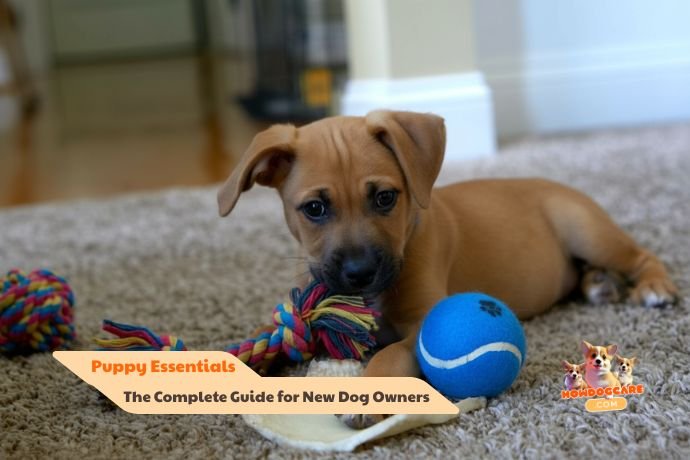Bringing a puppy home is pure joy—cute paws, wagging tails, and boundless energy. But behind all that puppy cuteness is a huge responsibility. If you’re new to dog parenting, getting the right puppy essentials is not just about spoiling your furry friend—it’s about creating the foundation for health, happiness, and successful training.
This guide covers everything you need to welcome your puppy home and raise them right. From best products for housebreaking to grooming gear and enrichment toys, we’ve rounded up the must-haves for new dog owners. Ready to start your puppy parenting journey like a pro? Let’s dive in.
Welcome to Puppy Parenthood: Getting Started
Why Puppy Essentials Matter for a Happy Start
Imagine bringing home a baby without a crib, bottles, or diapers—it’s chaotic, right? Puppies are no different. Having the right gear before your puppy arrives helps avoid stress for both you and your new best friend.
Here’s why investing in puppy essentials matters:
- Comfort and safety: Your home should be a haven, not a hazard.
- Smooth adjustment: Familiar beds, toys, and routines reduce anxiety.
- Foundation for training: The right tools make housebreaking and obedience training easier.
With the right preparation, your puppy will settle faster, learn faster, and bond with you better.
Preparing Your Home Before Bringing Your Puppy Home
Bringing a puppy home is exciting, but if you skip the prep work, you might also be bringing home chewed shoes and bathroom accidents. Puppy-proofing is step one.
Quick checklist to puppy-proof your home:
- Remove electrical cords from chewing range.
- Store cleaning products and medications securely.
- Install gates to block off restricted areas.
- Pick up shoes, socks, and anything chewable.
- Have a safe, designated puppy area with bedding, water, and toys.
Remember, a prepared home = a confident, relaxed puppy.
Essential Supplies Every Puppy Needs
Best Puppy Beds for Cozy Sleep
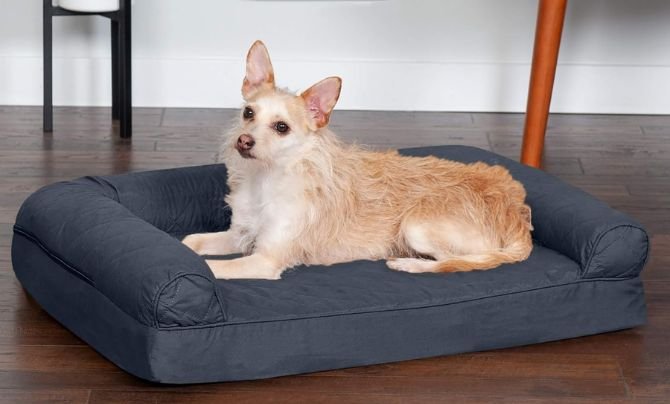
Your puppy’s bed should be soft, durable, and perfectly sized to make them feel cozy and secure. Puppies sleep up to 18 hours a day, and a good bed can also aid crate training by giving them a “den” of their own.
Top-rated puppy beds:
- Best Friends by Sheri Donut Cuddler: Ultra-soft, calming design for nervous pups.
- MidWest Homes for Pets Bolster Bed: Great for crate training, machine washable.
- Furhaven Orthopedic Sofa Pet Bed: Supportive foam base for larger puppies or breeds prone to joint issues.
Here’s a quick pros and cons comparison:
Pros
- Supports growing joints
- Helps with crate training
- Calming, anxiety-reducing shapes
Cons
- Can be chewed by teething puppies
- Needs regular washing
- Sizes may run small
Choose a bed that fits inside their crate and one that’s easy to wash. You’ll thank yourself later!
Top-rated Crates for Puppy Training Success
A crate isn’t just a containment tool—it’s one of the best puppy training essentials you can own. It helps with housebreaking, prevents destructive chewing, and teaches your puppy to relax alone.
Best crates for puppies:
- MidWest iCrate Starter Kit: Comes with crate, bed, and divider—perfect for growing puppies.
- New World Single Door Folding Metal: Budget-friendly, secure, and easy to fold flat for travel.
Why crates are critical:
- Puppies don’t like to soil their sleeping area, making crate training an effective housebreaking strategy.
- It teaches them independence and gives you peace of mind when you leave the room.
Want a tip? Always pair crate time with treats, toys, and positive reinforcement. The crate should be a puppy’s safe, happy place—not a punishment.
Feeding Essentials for Puppies
Best Puppy Food for Healthy Growth
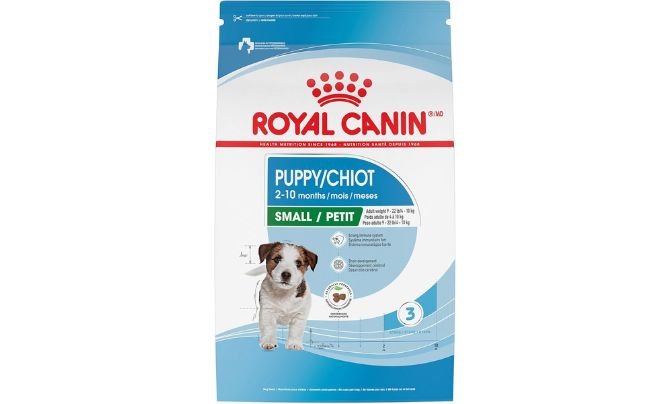
Choosing the right food is one of the most important puppy essentials for ensuring healthy growth, strong bones, and a shiny coat. Puppies need more protein, fat, and specific nutrients like DHA for brain development.
What to look for in puppy food:
- High protein content for muscle growth.
- Omega fatty acids for healthy skin and coat.
- Calcium and phosphorus for developing bones.
- DHA (from fish oil) for cognitive development.
Top-rated puppy foods:
- Royal Canin Puppy Dry Dog Food: Breed-size specific formulas for precise nutrition.
- Wellness Complete Health Puppy Formula: Deboned chicken and brown rice for a balanced, nutritious meal.
- Blue Buffalo Life Protection Puppy Formula: Features real meat as the first ingredient, with added LifeSource Bits for antioxidant support.
Here’s a handy pros and cons table for the top puppy food choices:
Pros
- Supports brain and vision development
- Balanced for growth and energy
- Grain-free and grain-inclusive options available
Cons
- Some picky eaters may prefer wet food
- Premium brands can be more expensive
- Requires gradual introduction to avoid tummy upset
Feeding tips:
- Feed 3-4 meals daily for puppies under 6 months.
- Always provide fresh, clean water.
- Avoid sudden changes in food to prevent digestive issues.
Investing in high-quality food now will pay off later with fewer health issues and a more energetic, happy puppy.
Best Treats for Training and Rewards

Puppies are eager learners, and treats are your secret weapon for fast training success. But not all treats are created equal—some can upset little tummies or contribute to unnecessary weight gain.
Best types of treats for puppies:
- Soft training treats: Small and easy to chew during fast-paced training sessions.
- Natural chews: Great for teething puppies but should be given under supervision.
- Single-ingredient treats: Ideal for sensitive stomachs or picky eaters.
Top-rated puppy treats:
- Zuke’s Mini Naturals Puppy Treats: Perfect size for training with added DHA.
- Wellness Soft Puppy Bites: Formulated specifically for puppies with wholesome ingredients.
- Blue Buffalo Wilderness Trail Treats: Grain-free, high-protein treats for growing pups.
Pros
- Encourages faster learning through positive reinforcement
- Gentle on puppy tummies
- Supports dental health if using chews
Cons
- Overfeeding treats can cause weight gain
- Some treats contain fillers—always check labels
- Chews require supervision to prevent choking hazards
Pro Tip:
Use treats exclusively for training. That way, they retain their value as a reward and don’t contribute unnecessary calories to your puppy’s daily intake.
Puppy Grooming Basics
Best Brushes for Different Puppy Coat Types
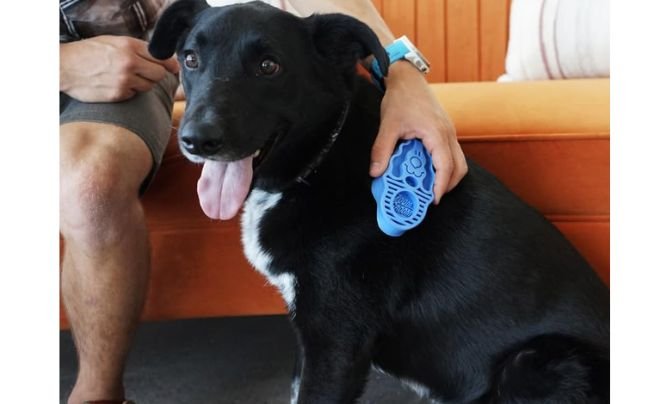
Grooming your puppy from a young age gets them used to the process, builds trust, and helps avoid problems like mats and tangles down the road. The best brush depends on your puppy’s coat type.
Brushes by coat type:
- Short-haired puppies (e.g., Beagles): Rubber curry brushes or grooming mitts.
- Medium-haired puppies (e.g., Spaniels): Slicker brushes for regular maintenance.
- Long-haired puppies (e.g., Golden Retrievers): Pin brushes and undercoat rakes to prevent tangles.
Top-rated brushes for puppies:
- Hertzko Self Cleaning Slicker Brush: Easy to use, gentle on sensitive puppy skin.
- KONG ZoomGroom Brush: Dual-purpose for brushing and shampooing.
- FURminator Deshedding Tool (Puppy Version): Perfect for puppies with thick or double coats.
Pros
- Reduces shedding and prevents mats
- Promotes healthy skin and coat
- Builds trust and strengthens your bond
Cons
- Some puppies dislike brushing at first
- Requires regular maintenance for long-haired breeds
- Initial purchase cost for high-quality brushes
Start brushing daily for long-haired puppies or weekly for short-haired ones. Pair grooming with treats to create positive associations.
Puppy Bathing Essentials and Tips
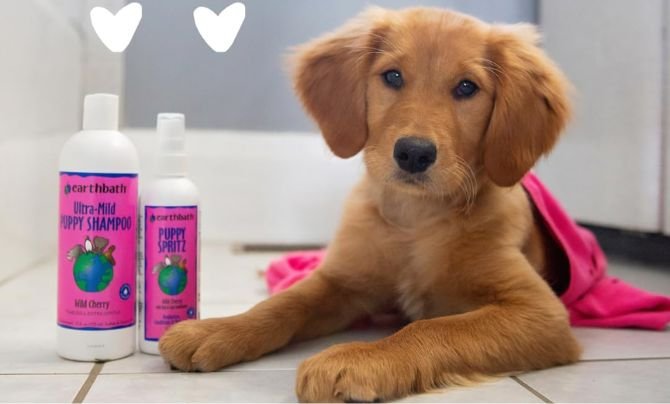
Keeping your puppy clean isn’t just about smelling fresh—it’s about keeping their skin healthy and free from dirt, allergens, and potential irritants. But puppy skin is sensitive, so using the right products makes all the difference.
How often should you bathe a puppy?
- Generally once a month, unless they get extra dirty.
- Over-bathing can strip their skin of natural oils.
Puppy bathing essentials:
- Gentle puppy shampoo: Hypoallergenic and tear-free formulas work best.
- Soft towels or a microfiber drying towel: Super absorbent for faster drying.
- Non-slip mat for the tub: Helps prevent accidents or slipping.
- Brushes or combs: For pre-bath detangling if your puppy has longer fur.
Top-rated puppy shampoos:
- Earthbath Ultra-Mild Puppy Shampoo: Gentle, pH-balanced, and free from parabens and sulfates.
- Burt’s Bees Puppy Shampoo & Conditioner: All-natural formula with buttermilk and linseed oil.
- Wahl Puppy Shampoo with Cornflower: Plant-derived, great for puppies with sensitive skin.
Pros
- Gentle on sensitive puppy skin
- Safe for frequent use if needed
- Helps prevent itchy, flaky skin
Cons
- Puppies may dislike water initially
- Requires drying time, especially for long-haired puppies
- Bathing too often can lead to dryness if not careful
Pro Tips for Puppy Bath Time:
- Use lukewarm water, not hot or cold.
- Avoid getting water in the ears—gently wipe ears separately after the bath.
- Finish with lots of praise and treats to build a positive association.
By making bath time fun and rewarding, your puppy will learn to love the experience rather than fear it.
Training Gear for Raising a Well-Behaved Puppy
Best Leashes and Collars for Puppies
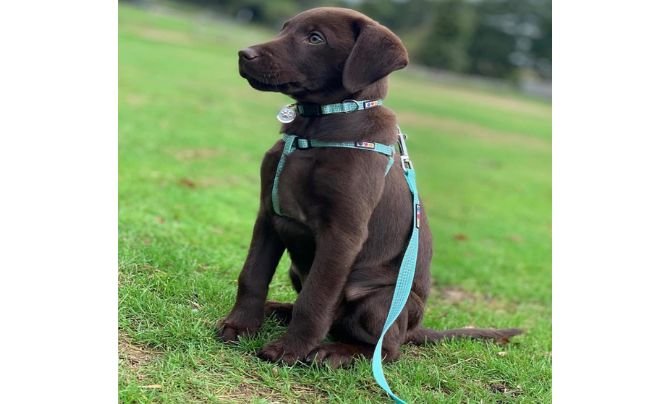
One of the first training essentials for any puppy parent is the right collar and leash combination. While harnesses may eventually be preferable, starting with a soft, adjustable collar is often best for those early weeks.
What to look for:
- Adjustable sizing to grow with your puppy.
- Soft materials to avoid irritation.
- Quick-release buckle for easy on and off.
- Lightweight leash for controlled, but comfortable walks.
Top-rated puppy collars and leashes:
- Blueberry Pet Classic Adjustable Collar: Simple, durable, and available in multiple sizes.
- Pawtitas Reflective Puppy Collar: Offers visibility for evening walks.
- Voyager Reflective Dog Leash: Affordable, lightweight, and durable.
Pros
- Adjustable to fit growing puppies
- Available in fun colors and reflective designs
- Easy for beginners to use
Cons
- Some collars may irritate very sensitive skin
- Collars shouldn’t be used for leash training pullers—harnesses work better for that
- Puppies may chew on their leash if unsupervised
Leash training tip:
Keep sessions short and positive. Start indoors where there are fewer distractions before moving outside.
Must-Have Puppy Training Pads for Easy Housebreaking
Potty accidents are inevitable with puppies, but training pads can make the learning curve easier to handle.
Benefits of puppy training pads:
- Protects floors and carpets during the housebreaking phase.
- Encourages consistent potty training when paired with a routine.
- Provides a reliable solution for apartment dwellers or during bad weather.
Top-rated puppy training pads:
- Amazon Basics Dog and Puppy Pads: Affordable and effective for most puppies.
- Four Paws Wee-Wee Pads: Quick-drying with built-in attractant to guide your puppy.
- Glad Activated Carbon Training Pads: Helps control odor for multi-dog households.
Pros
- Prevents accidents indoors during training
- Makes housebreaking easier, especially for apartment dogs
- Easy cleanup for busy owners
Cons
- Shouldn’t be relied on permanently for outdoor-trained dogs
- Some puppies may play with or shred the pads
- Pads require frequent replacement to stay sanitary
Training tip:
Place the pad in a consistent location and praise your puppy every time they use it. Gradually move the pad toward the door if transitioning to outdoor potty training.
Toys and Enrichment for Growing Puppies
Top-rated Chew Toys for Teething Puppies
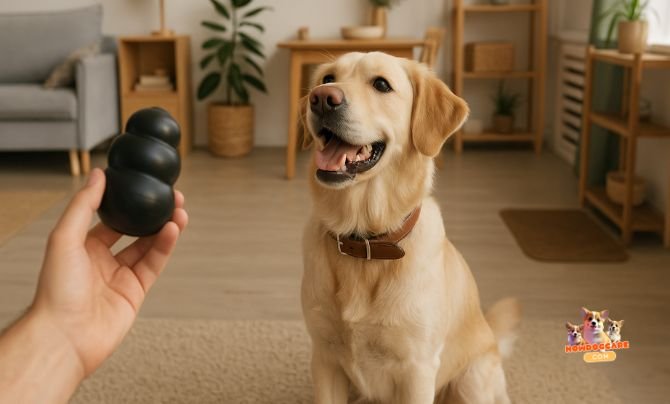
Teething is a natural—but sometimes frustrating—part of puppyhood. As your puppy’s adult teeth start pushing through, they’ll chew anything and everything they can reach. Having the right chew toys helps protect your furniture, shoes, and sanity.
What to look for in teething toys:
- Durable, puppy-safe materials (avoid toys with parts that can break off easily).
- Soft enough for sensitive gums, yet firm enough to satisfy chewing needs.
- Textures and grooves to help soothe gum discomfort.
Top-rated chew toys for puppies:
- KONG Puppy Toy: Can be stuffed with treats or frozen to provide relief for teething gums.
- Nylabone Puppy Chew Toy: Soft yet durable, ideal for soothing during teething.
- Benebone Puppy Dental Chew: Made with real flavors like bacon or chicken to keep puppies engaged.
Pros
- Helps reduce destructive chewing
- Soothes teething discomfort
- Keeps puppies occupied during crate time
Cons
- Requires supervision to prevent swallowing large pieces
- Some puppies may lose interest quickly
- Strong chewers may damage softer toys faster
Pro Tip:
Try freezing a stuffed KONG with peanut butter or wet food to provide extra relief during teething phases.
Interactive Puzzle Toys to Stimulate Your Puppy’s Mind
Mental exercise is just as important as physical activity for puppies. Interactive puzzle toys engage your puppy’s problem-solving skills, help combat boredom, and reduce anxiety during crate time or alone periods.
Benefits of puzzle toys:
- Encourages independent play.
- Helps prevent boredom-related behavior issues.
- Provides an outlet for natural foraging instincts.
Top-rated interactive toys:
- Outward Hound Hide-A-Squirrel Puzzle Toy: Combines plush toys with a challenging hide-and-seek element.
- TRIXIE Puppy Activity Flip Board: Offers different compartments with varying levels of difficulty.
- Snuffle Mats: Scatter treats among fabric folds to turn snack time into a game.
Pros
- Stimulates your puppy’s brain
- Slows down treat consumption
- Can reduce separation anxiety when left alone
Cons
- Some toys may require supervision to prevent chewing pieces
- May need regular cleaning to remove crumbs or drool
- Not suitable for aggressive chewers
Using puzzle toys during crate time or when guests visit can help your puppy stay calm, entertained, and mentally stimulated.
Related Articles
Health and Safety Essentials
Puppy Vaccination Schedule and Vet Visits
Regular vet visits and vaccinations are critical parts of raising a healthy puppy. Puppies are born with some natural immunity, but they need a complete vaccination schedule to stay protected from common diseases.
Core puppy vaccinations:
- DHPP (Distemper, Hepatitis, Parvovirus, Parainfluenza): Typically given in a series of 3 shots.
- Rabies: Usually administered at 12 to 16 weeks, depending on local regulations.
- Bordetella (Kennel Cough): Recommended if you plan on using grooming, boarding, or dog daycare services.
- Leptospirosis and Lyme Disease: Depending on your location and lifestyle.
Typical vaccination schedule:
| Age | Vaccination |
|---|---|
| 6–8 weeks | DHPP (1st dose) |
| 10–12 weeks | DHPP (2nd dose), Bordetella optional |
| 14–16 weeks | DHPP (3rd dose), Rabies |
| 16+ weeks | Optional vaccines depending on risk |
Puppy Vaccination Schedule Printable Chart
A trusted veterinarian will guide you through your puppy’s health milestones, including parasite prevention, microchipping, and spaying/neutering options.
Best Flea and Tick Prevention for Puppies
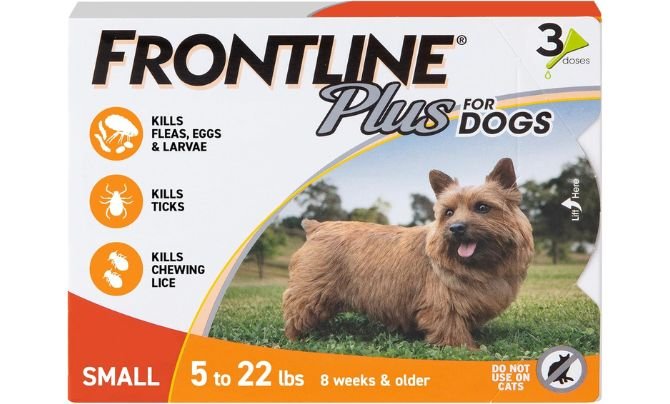
Even young puppies are susceptible to fleas, ticks, and parasites. While you shouldn’t use heavy-duty flea treatments meant for adult dogs, there are puppy-safe options available.
Top-rated flea and tick preventatives for puppies:
- Frontline Plus for Puppies (8+ weeks): Kills fleas, flea eggs, lice, and ticks.
- K9 Advantix II (for larger puppies): Protects against fleas, ticks, and mosquitoes.
- Seresto Flea and Tick Collar (12+ weeks): Long-lasting, odorless protection.
Pros
- Prevents flea infestations and tick-borne diseases
- Monthly treatments are easy to administer
- Available in collars, topicals, and oral treatments
Cons
- Always check age/weight requirements for puppies
- Some products may irritate sensitive puppy skin
- Consult your vet before using any product on very young puppies
Reminder:
Start parasite prevention early and maintain a regular schedule as your puppy grows. It’s easier to prevent problems than to treat infestations later.
Travel Essentials for Puppy Adventures
Best Travel Carriers for Small Breeds
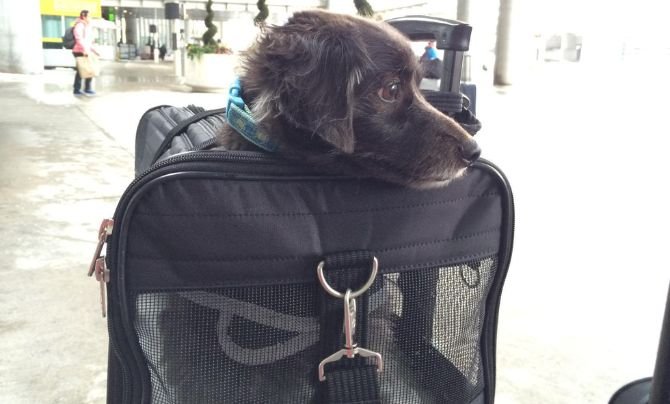
Traveling with a puppy—whether it’s a vet visit or a weekend getaway—requires the right travel carrier to keep your puppy safe and secure.
Features to look for in a puppy carrier:
- Comfortable padding for long rides or waits.
- Plenty of ventilation to keep your puppy cool.
- Secure zippers or latches to prevent escape.
- Size appropriate—your puppy should be able to stand, turn, and lie down comfortably.
Top-rated puppy travel carriers:
- SherpaOriginal Deluxe Pet Carrier: Airline-approved, soft-sided, and widely recommended.
- Petseek Travel Carrier: Lightweight with mesh panels and cozy interior bedding.
- Sleepypod Mobile Pet Bed: Doubles as both a bed and a carrier, ideal for car travel.
Pros
- Makes travel safer and more comfortable for your puppy
- Reduces anxiety with cozy bedding inside
- Great for socialization—taking your puppy out and about safely
Cons
- Puppies may need time to adjust to carriers
- Not ideal for larger breeds as they grow
- Soft-sided carriers require cleaning after accidents
Pro tip:
Introduce the carrier early at home with treats and toys so your puppy views it as a safe, positive place.
Portable Bowls and Bottles for Puppies on the Go
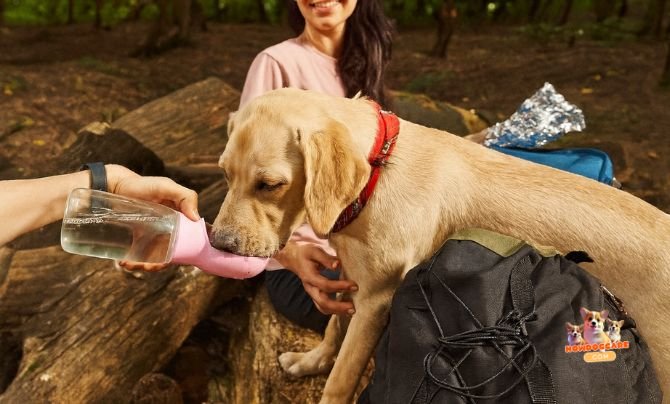
Puppies need frequent hydration, especially during warm weather or long outings. A good portable bowl or bottle makes it easy to give them water whenever needed.
What makes a great travel bowl or bottle?
- Leak-proof design to avoid messes.
- Collapsible or compact for easy storage.
- Dishwasher safe for quick cleanup.
Top-rated portable dog bowls:
- MalsiPree Portable Dog Water Bottle: One-handed operation with built-in bowl.
- Highwave AutoDogMug: Squeeze to fill, drink, and release extra water back into the bottle.
- COMSUN Collapsible Dog Bowls: Silicone, foldable, and attachable to backpacks or leashes.
Pros
- Easy hydration during hikes, walks, or car rides
- Prevents dehydration, especially in summer
- Saves space and keeps bags organized
Cons
- Some models may drip if tipped over
- Puppies might need training to drink from certain bottles
- Not suitable for large dogs requiring lots of water
Having these travel essentials on hand ensures that every adventure with your puppy is both fun and stress-free.
Socialization Essentials for Your Puppy
Introducing Your Puppy to New Experiences
Socialization is one of the most important steps in raising a well-rounded, friendly dog. It’s about exposing your puppy to people, pets, environments, and noises in a positive way so they grow into confident adults.
Key socialization steps:
- Introduce new people and gentle dogs gradually and with plenty of praise.
- Take your puppy on short trips to parks, pet stores, or safe public spaces.
- Expose them to household noises like vacuum cleaners, blenders, or doorbells.
Remember—early socialization helps prevent fear-based behavior like anxiety or aggression later in life.
Puppy Classes vs. At-Home Socialization
Both puppy classes and home-based exposure have benefits, but structured puppy kindergarten classes offer professional guidance and help with basic obedience.
Benefits of puppy classes:
- Safe, controlled environments for puppy play.
- Guided introductions to new sights and sounds.
- Socialization with different dog breeds and sizes.
If classes aren’t available:
- Arrange playdates with friends’ vaccinated dogs.
- Take your puppy on car rides to expose them to different environments.
- Create positive associations with every new experience using treats and toys.
Early, structured socialization sets the stage for a happy, well-adjusted adult dog who’s ready for anything life throws at them.
Mistakes to Avoid When Shopping for Puppy Essentials
Buying Low-Quality Gear
New puppy parents often fall into the trap of buying the cheapest gear they can find, thinking it’s “just temporary.” But cheap collars, beds, or toys can fall apart—or worse—pose a choking or safety hazard.
Common pitfalls to avoid:
- Poorly made chew toys that break easily.
- Low-quality training pads that leak or shred.
- Beds with zippers or stuffing accessible to curious pups.
Invest in quality products upfront—they’ll last longer, perform better, and keep your puppy safer.
Forgetting Training and Socialization Products
It’s easy to get excited about toys, collars, and beds—but don’t overlook training and enrichment tools. Puzzle toys, training clickers, treat pouches, and grooming supplies are just as important as food bowls or leashes.
Without the right training products, you’re setting yourself up for behavioral challenges later.
Conclusion: Starting Strong with Puppy Essentials
Raising a puppy is one of the most exciting—and challenging—adventures you’ll ever take on. But with the right puppy essentials, you’ll set yourself and your new furry friend up for a lifetime of happiness together.
From cozy beds and nutritious food to enrichment toys and smart training tools, every choice you make now builds the foundation of your dog’s future. Start strong, prepare well, and enjoy every tail wag, sloppy kiss, and joyful zoomie along the way.
FAQs About Puppy Essentials
How many toys should I buy for my puppy?
Start with 3-5 high-quality toys, and rotate them to keep things interesting.”
When should I start training my puppy?
Immediately! Basic training and crate introduction can start at 8 weeks old.
How often should puppies eat?
Puppies under 6 months typically eat 3-4 small meals per day.
Should I use a crate or a puppy pen?
Both work, but crates are especially helpful for housebreaking and providing a sense of security.
How do I keep my puppy calm during travel?
Start with short, positive car trips. Bring their favorite toy or blanket and use a secure travel carrier.


